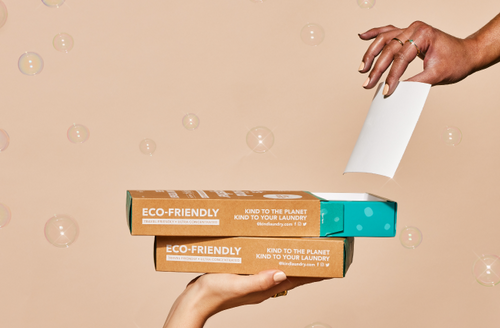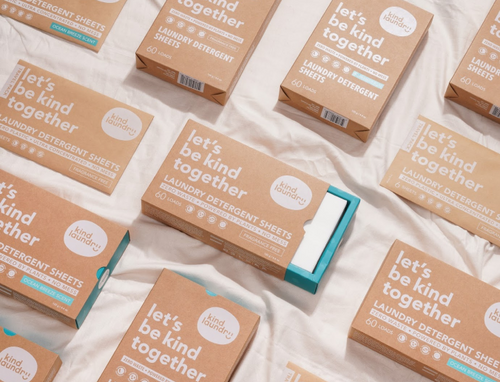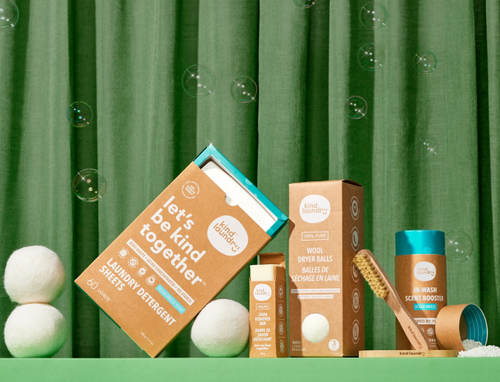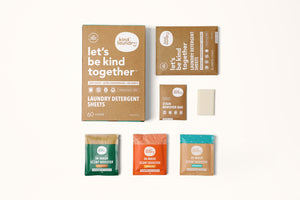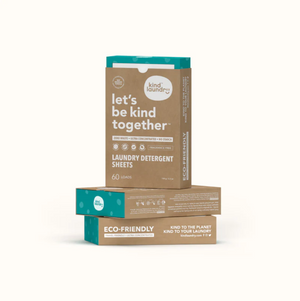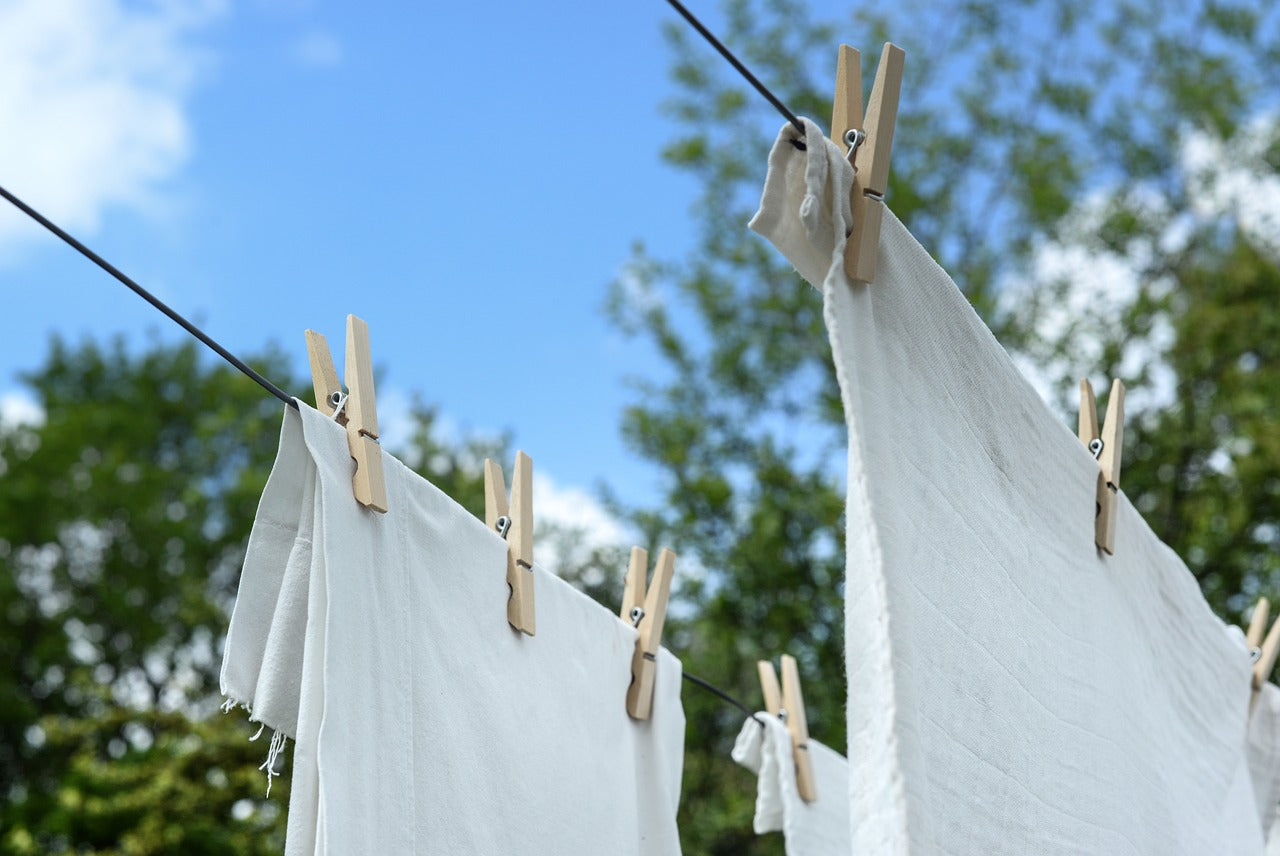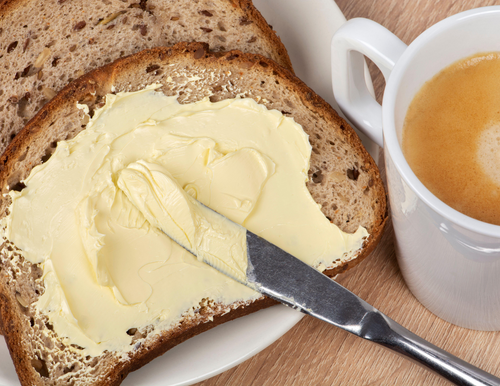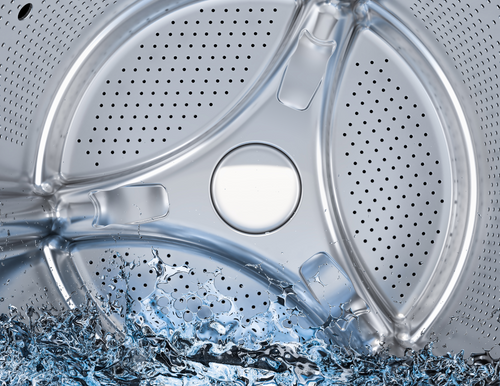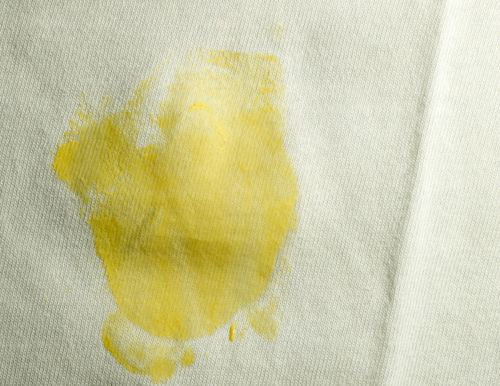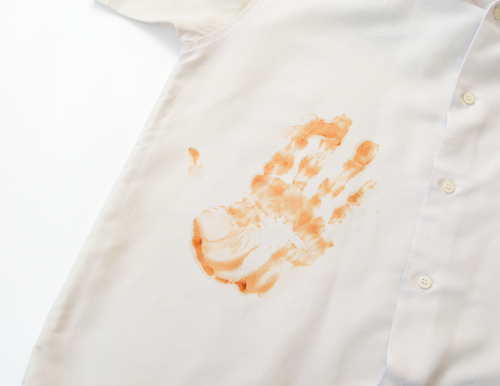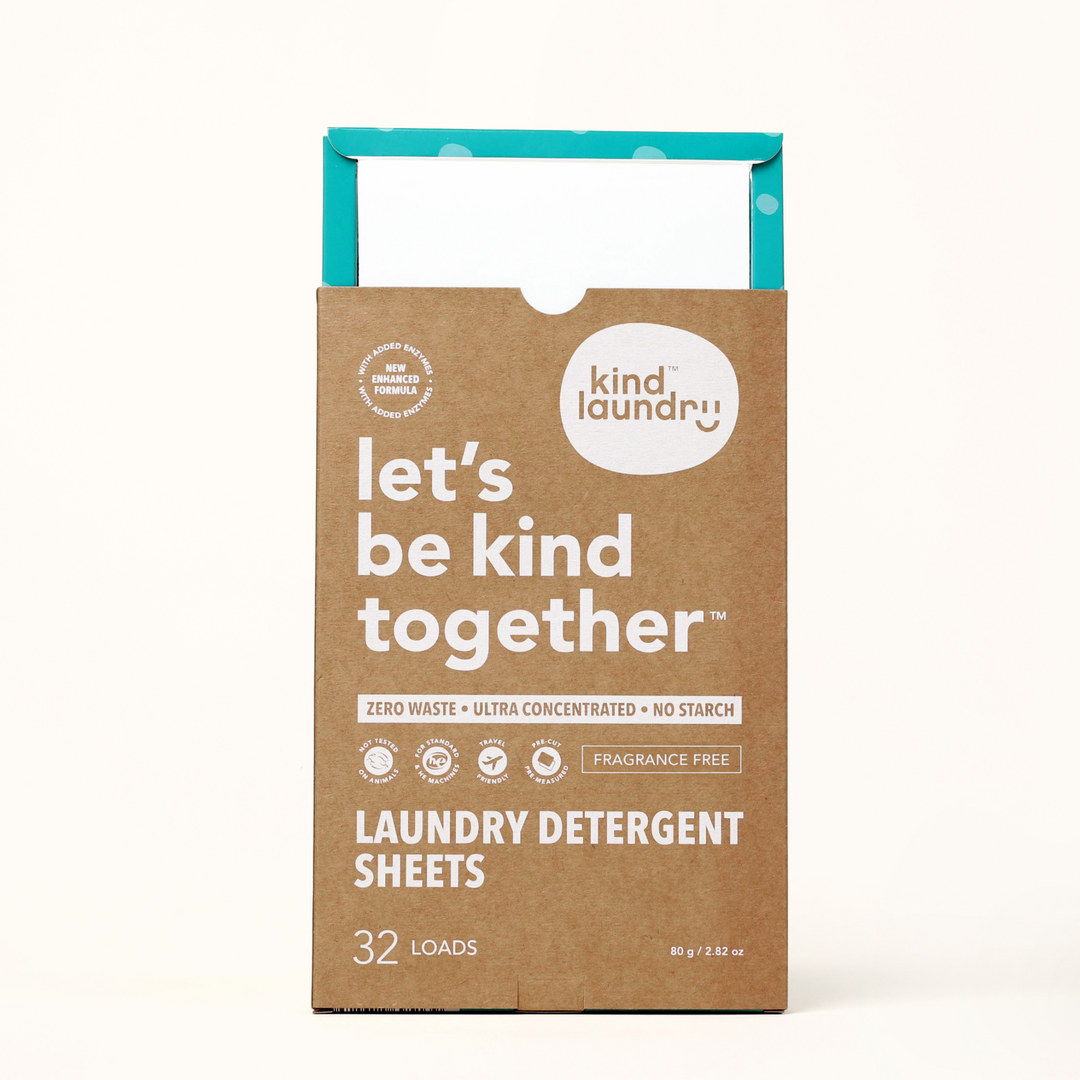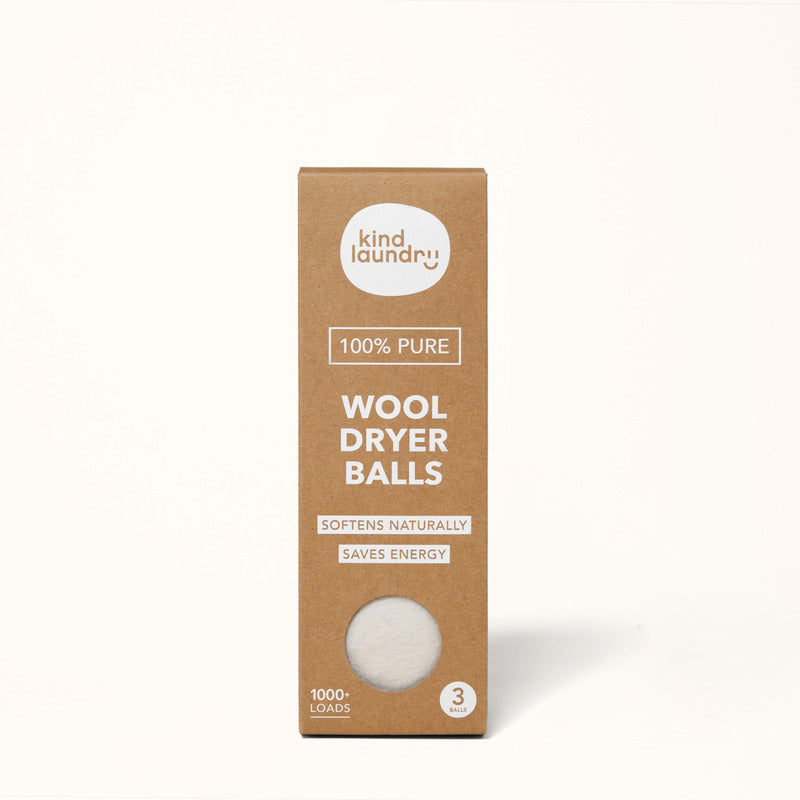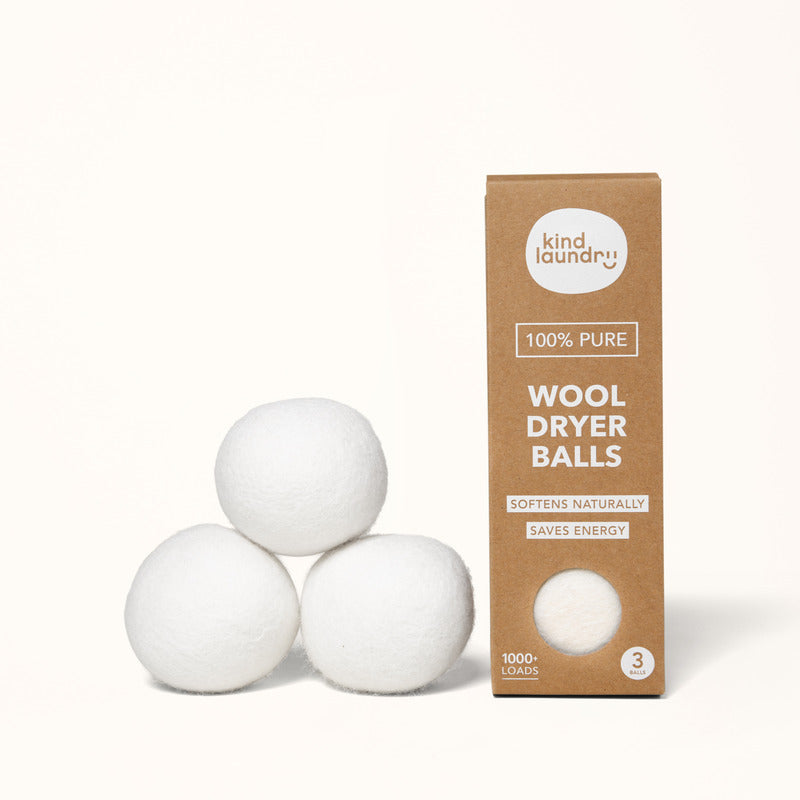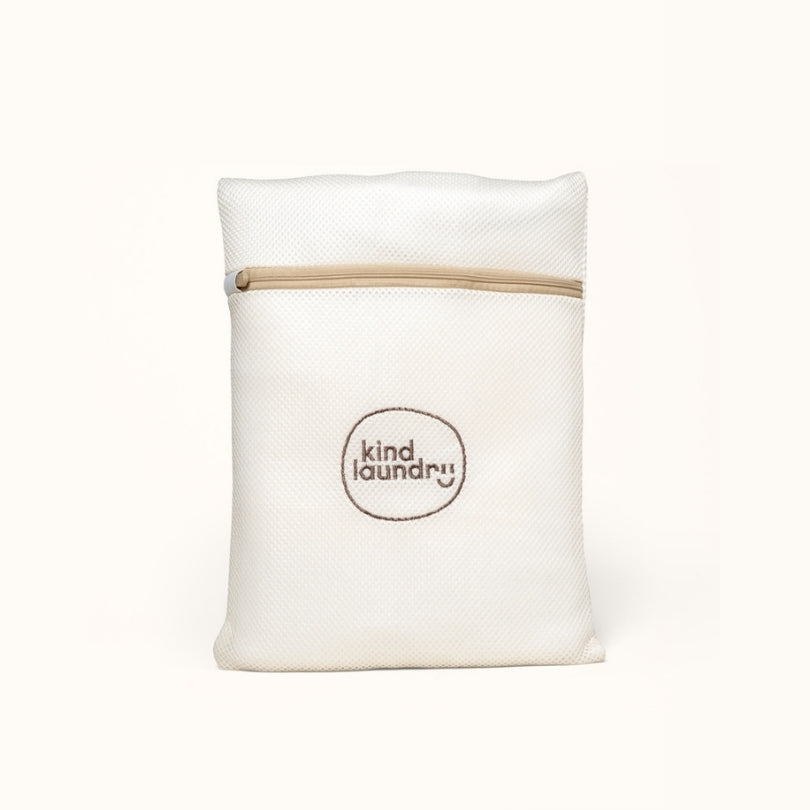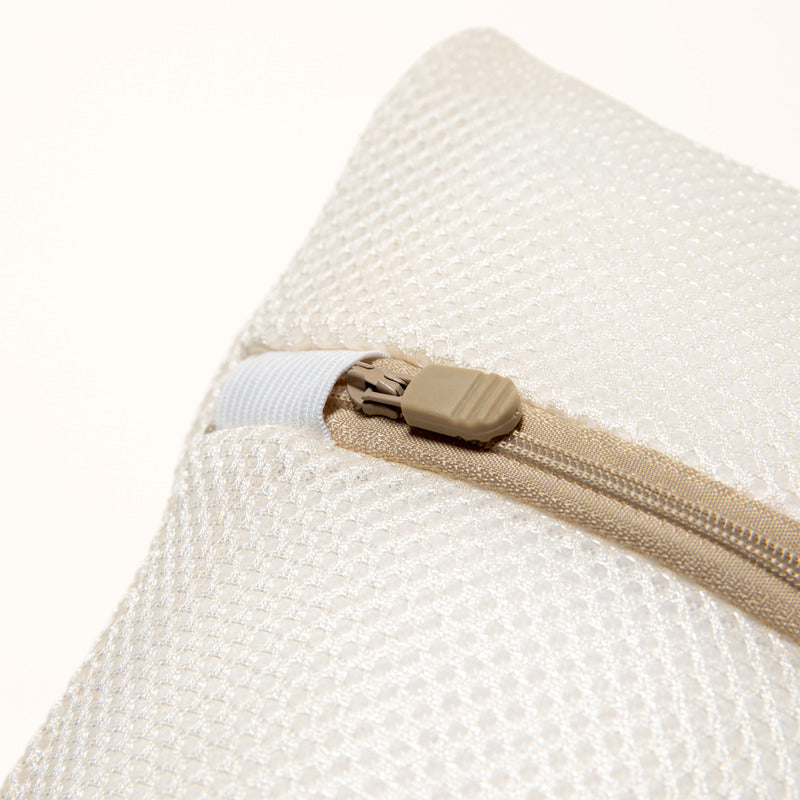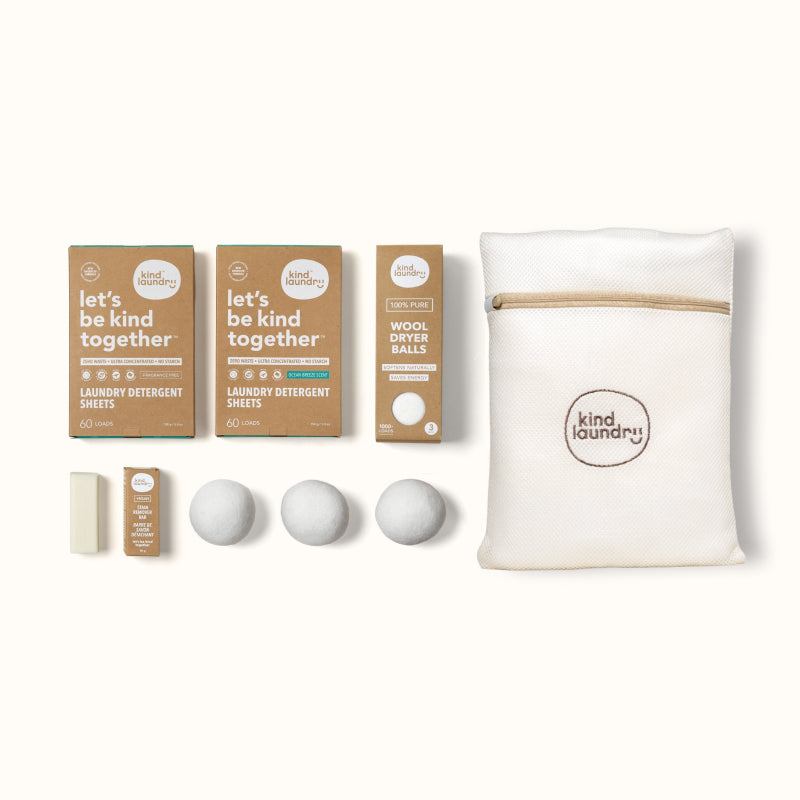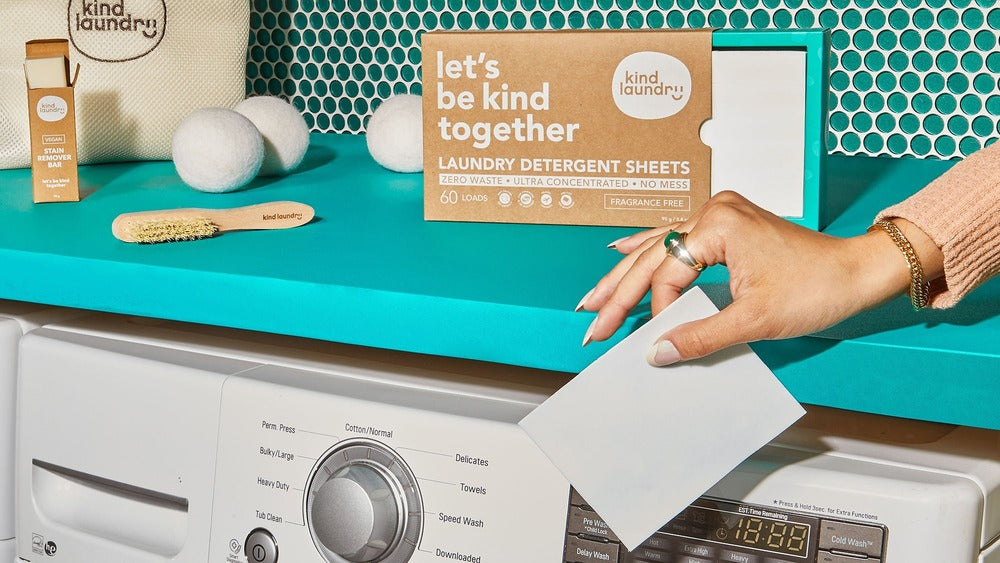Struggling to find the right advice on how to wash whites? Then you’re not alone. There seems to be a fine art to washing whites and keeping them looking and feeling clean and soft.
Below we look at how to wash white clothes, what setting to wash white clothes on in your washer, and generally how to care for white clothes. That includes a step-by-step guide on how to clean whites and some useful tips on hot vs cold water washing and why to avoid using bleach.
One of the most important factors when washing whites is to use the right pre-treatment for stains, and the right type of laundry detergent.
Not all laundry products are made the same way. While some are eco-friendly, vegan and come in plastic-free, zero-waste packaging - others can be made from toxic substances and packed in plastics that pollute the Earth.
So when you’re deciding which laundry products to use, consider Kind Laundry’s vegan stain remover bar and eco-friendly laundry detergent sheets. 
What Setting to Wash White Clothes? Hot or Cold Water
Some people say there’s an art to washing white clothes. That’s probably why so many people are looking for advice on how to wash whites, what setting to wash white clothes on, and which is the best laundry detergent to use when washing whites. When it comes to cleaning whites, you’ll want to make sure you use the correct water temperature for washing. While hot water is useful for removing dirt and stains, it can also cause delicate fabrics to be damaged and shrink. And, using hot water may increase your electric bill and use more power, which can have negative impacts on climate change.
That’s why a cold or warm water wash is preferable to a hot one. And in many cases, cold water will suffice. Always remember when washing clothes (including when washing whites), that it's important to read your clothing labels and care instructions. These will tell you what temperature is recommended.
Certain items like towels, socks and sheets can typically be washed in warm water. But watch out for delicate fabrics like chiffon, silk, nylon, spandex, linen and lace which may require a cold wash.
How to Properly Wash White Clothes
Perfectly clean, crisp white clothes like a white linen dress or a white shirt can help you stand out from the crowds. But, it can be a constant battle to keep them looking that way.
But it can be tricky to figure out how to clean white clothes, how to wash white shirts, and what steps to take to make sure they stay white and look great.
Whether you need to figure out how to get tea stains out of clothes, how to get rid of coffee stains on clothes, or how to get grass stains out of clothes jeans or shoes - laundry can be a challenge. That’s why we’ve put together this step-by-step guide on how to wash whites.
Step-by-step guide on washing white clothes
There are 7 important steps to follow when washing white clothes.
The step-by-step instructions on how to wash whites (below) will help you perfect your laundry and keep your whites looking clean and smelling fresh.
Step 1: Read the Labels
Don't forget to look at your garment tags to read the care instructions. Certain materials may need to be washed separately, on a warm or cold wash, or may even need to be hand washed.
It’s important to follow these instructions carefully. Accidentally washing whites on the wrong setting or at the wrong temperature, could cause colors to run, fabric to shrink or be ruined.
Step 2: Hand-Wash Delicates in Cold Water
First start by separating colors from whites - make a heap of clothes for each. The reason why this is important is because if you wash whites with colors, the colors could bleed and run - ruining your whites and turning them a shade of pink, blue, purple, etc.
Next, take your white heap of clothes and once you’ve read the care instructions, sort your laundry into piles accordingly. Make a pile for all the fabrics that need to be washed on a cold water setting. That may include fabrics like silk, satin, lycra, spandex, and wool.
Make another pile for any items that require hand washing or a very gentle cycle. And, make a third pile for items that can be washed warm.
From an environmental perspective, it’s best to try and wash each of these separate piles of clothes once you have enough for a full wash load - otherwise you may be wasting precious resources like water, energy and detergent.
Step 3: Pretreat Laundry Stains
Before you start washing your white clothing, towels or linen - it’s recommended that you pretreat any stains.
You may have read about all sorts of clever hacks for treating stains, like using vinegar, baking soda or rubbing alcohol. But, many untested stain removal tricks can actually be hazardous, so it’s safer (and probably more eco-friendly) to use a product that’s vegan and doesn’t contain any nasties.
Kind Laundry’s Vegan Stain Remover Bar is made from natural, non-toxic ingredients. It’s free from phosphates, fragrances, sodium laurel, lauryl or laureth sulfate. And, it hasn’t been tested on any animals.
It’s suitable for cleaning delicate clothes and fabrics. It’s also known to be effective at removing even the toughest stains made from things like red wine, tea, coffee or grass.
To use this product, all you need to do is moisten the stained area using cold water and then rub in some of the stain remover bar. Rubbing it in gently, let the solution stay on the fabric for around 20 minutes Then wash it off with cold water and you’re ready to put that item of clothing in with your white wash.
Tip: here are some of our guides to removing and treating different types of clothing stains:
Step 4: Load Your Washer (and Select the Correct Setting)
Make sure you have a full load to wash - that way you can do your bit for the environment by using resources most efficiently.
Be careful not to overload your washer, however. Otherwise it may not be able to function optimally in cleaning your whites. Once you’ve loaded the machine, you’ll want to make sure you put it on the correct setting and temperature. 
Step 5: Add an Eco-friendly Detergent
The next step in how to wash white clothes properly, is to use the right type of detergent.
Not all laundry detergents are created equal. Some contain bleach and may actually end up harming your clothes and turning them yellow over time.
Others may contain a host of harmful chemicals that may cause skin irritations and allergies, or worse.
When you’re looking for a suitable white clothes detergent, consider ones that are safe for you and your family, as well as the environment.
Look for detergents like Kind Laundry’s eco detergent sheets that are made from natural ingredients, that avoid synthetic fragrances and toxic substances, and that come in plastic-free packaging.
Choosing an eco laundry detergent is not only better for your health and the planet, but it may also be better for your clothes.
Step 6: Dry Your Clothes
Make sure your clothes are stain-free before you dry them as that may otherwise make the stain set-in.
If possible, try to line dry all your clothes because it’s the eco-friendly thing to do. And the sun’s UV rays will also help to brighten your whites on the line.
If it’s not possible to dry your clothes outside, then check the garment labels to see if they can be put in the drier. If so, you may want to use the Kind Laundry wool dryer balls to help dry your clothes more quickly and naturally.
If you do use a drier, it’s best to avoid dryer sheets as they can actually leave a residue on your clothes that may turn them yellowish over time.
Step 7: Store Your Clothes Properly
Be careful not to overlook the importance of properly storing your clean white laundry. It’s best to store clothes and other laundry items in wardrobes that aren’t damp and that don’t have any mold, silverfish or dust.
Also aim to avoid storing clothing in direct sunlight and somewhere that gets sufficient ventilation.
How to Wash Delicate Whites
How do you wash white clothes that are made from delicate fabrics? If you’re looking for advice, here’s an easy to follow, 5-step guide to washing delicate whites.
Step 1: Pretreat delicates carefully
Once you’ve identified which of your clothes are delicates, you can wash them together as long as they are all white. Avoid mixing your delicates with any colors or fabrics that may run.
Step 2: Hand-wash delicates in cold water
Hand-washing delicates is the best way to make sure that they won’t be ruined by a wash cycle that’s too long or too warm. Check the care instructions on the label to see what temperature you can wash your delicates on. Generally this will be cold water.
Some delicates can be machine washed, and most washers have a hand wash setting (check the labels to find out which can go in a washer, and what heat to put them on).
If you’re using a washer for your delicates, consider how to wash white clothes in the washing machine so that they don’t get damaged. Putting your delicates into a mesh laundry bag can protect them from being torn or tangled. This is particularly useful for things like swimsuits, bikinis, lingerie, and woolen sweaters.
If you’re washing by hand, make sure you’re gentle when you wash the clothes and don’t scrub or twist the fabric.
Step 3: Use a mild laundry detergent
Choosing a safe and eco-friendly laundry detergent for your clothes is a way to protect your health and the environment. Avoid toxic ingredients and detergents that come in plastic packaging.
One of the best detergents for hand-washing clothes (especially delicates) is Kind Laundry’s eco-conscious laundry detergent sheets. They are designed to have a minimal impact on the Earth, while being free from harmful chemicals like laureth sulphate or formaldehyde.
Step 4: Rinse Your Delicates
If you’re hand washing your delicates, don’t forget to rise out all the detergent properly before handing them up to dry.
It also helps to drain out all the excess water before handing your clothes on the line to dry.
Step 5: Line Dry Your Delicates
Try to avoid using a drier for your delicates, as the heat may damage the fabric and cause it to shrink. If you do end up using a drier, first check the labels to see if your garment can go in a drier.
Avoid using toxic dryer sheets, which may actually turn your clothes yellow. Instead, you can use non-toxic, earth-friendly Wool Dryer Balls from Kind Laundry which help to soften your clothes naturally. Made from pure New Zealand wool, these natural dryer balls speed up drying time dramatically (which can save energy), and they can last for over 1000 loads of washing.
If you can, it’s best to line-dry your delicate clothes. Make sure that they are totally dry before removing them from the line. 
You Might Want to Skip The Bleach
When you think about getting stains or yellowing out of white fabric, you may automatically think about adding bleach to your wash. Here’s why you might want to skip the bleach.
Firstly, there are many types of fabrics that can’t be bleached because the bleach will destroy the fabric. Your clothing label should indicate whether you can use bleach or not. And even though you may think of bleach as working to turn whites more brilliant - some people say it can actually cause yellowing of fabrics. That could be due to using too much bleach, the type of bleach you use, or even the particular brand of bleach you buy.
Secondly, bleach is not that great for the environment. And it can be unsafe to handle. If you use bleach in combination with vinegar, for example, you can create a toxic and sometimes lethal gas. And when you add bleach to your washing, it enters the water cycle and can end up in rivers and the ocean where it can be harmful to the environment.
And lastly, there are a range of alternatives to using bleach that can remove stains and care for your clothes (and the planet). For example, the Kind Laundry vegan stain remover bar and eco detergent sheets are resource-efficient (they don’t contain large amounts of water), they don’t contain toxic nasties, and they help fight plastic pollution that often ends up in rivers and oceans. 
How to Care For White Clothes
White towels, white bed sheets and white duvet covers are generally quite straightforward to wash. But when it comes to caring for your white clothes, it can get a little trickier with certain fabrics.
Some fabrics like silk or wool may need extra attention when washing. That’s why it’s important to follow the step-by-step guide to washing white clothes above to make sure you’ve read the care instructions, you’ve separated colors from whites and that you pretreat any stains.
Watch out that you don’t put delicate garments on a wash that ‘s too hot or long. Also be careful about what type of laundry detergent you use and be careful to avoid bleach.
And after you’ve washed your clothes, make sure that you check the label again to see if you can iron the fabric. Also make sure that your clothes are totally dry before packing them away, and that your closets are free from any creatures like silverfish that may destroy your clothes.
How Often to Wash White Clothes
White clothes tend to turn yellowish quite easily if they’re worn close to your skin and not washed after every time you wear them.
When you sweat, certain areas of the fabric may tend to discolor more than others, like collars and under arms. The same holds true for white bedsheets.
Regular washing therefore helps to reduce discoloration.
When it comes to items of clothing that you’re wearing to keep warm like a sweater, you may be able to wear it a few times before washing it if it’s not in direct contact with your skin.
Tips For Washing White Clothes
When it comes to how to take care of white clothes and how to care for white clothes, these tips for washing whites may be helpful in making sure your clothing is kept clean and looking great.
- Keep your washer clean. Washers should be cleaned every couple of months to make sure they don’t have any bits of dirt lodged inside them that may discolor your white clothing.
- Avoid using bleach, and if you do use it then make sure it’s properly diluted when you add it to the wash.
- If you’ve used a bleaching agent on your clothing, then take care not to leave them out in the sun for too long once they’re dry, as that could make the fabric turn yellowish.
- If your water is considered hard, then soaps and detergents may have difficulty lathering and working optimally. You may want to consider using water-softening technology to improve the ability to wash your whites.

The Final Verdict: The Best Way to Wash Whites
If you’ve been searching for the best way of how to wash whites, then hopefully this article has given you some useful tips and advice. Washing whites takes a little know-how about what steps to follow, and what types of laundry products to use (and which ones to avoid).
If you’re looking for an environmentally-friendly and non-toxic products to pre-treat, wash and dry your white laundry - then Kind Laundry’s specially formulated range should be top of your shopping list.
